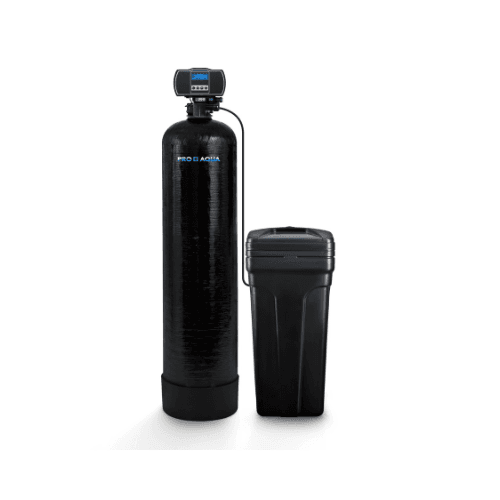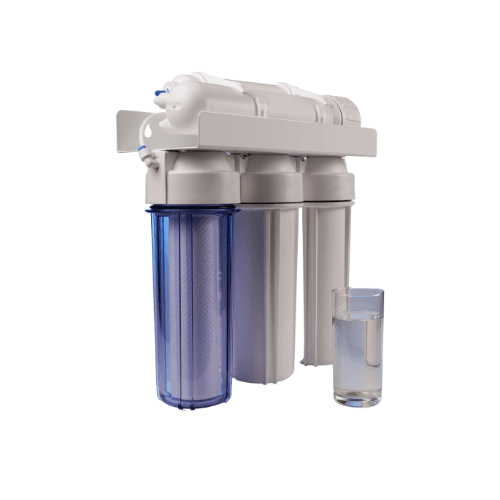Filteredwaterguide.com is supported by readers. If you purchase through referral links on our site, we make a commission at no extra cost to you. Learn more.

Installing a water treatment system requires careful planning to ensure maximum effectiveness.
When homeowners invest in both a water softener and a whole house water filter, one of the most common questions we get at Filtered Water Guide is about proper installation order.
Through our extensive testing and real-world installations, we’ve discovered that getting this sequence right is absolutely crucial for optimal water quality and system longevity.
The big question: Where exactly should you place your whole house water filter in relation to your water softener?
We’ll be straight with you – there’s no one-size-fits-all answer because your specific setup depends on several key factors that we’ve identified through years of hands-on experience.
In this comprehensive guide, we’ll walk you through everything we’ve learned about proper installation order and help you determine the ideal configuration for your home’s water treatment system.
Before diving into installation order, let’s clarify what each system does:

In our work across America, we’ve found that hard water is one of the most persistent problems homeowners face, particularly those with well water. This aligns with findings from the United States Geological Survey (USGS) study.
Hard water, rich in calcium and magnesium minerals, creates numerous household headaches: stubborn limescale buildup on fixtures, spotty dishes, and potential plumbing blockages.
Water softeners work through a sophisticated ion exchange process, effectively removing these troublesome minerals and putting an end to hard water problems.

In our testing lab, we work with numerous types of whole house water filters (also known as point of entry, media, or whole home filters).
What sets these systems apart is their ability to improve your water’s quality across three crucial aspects: appearance, taste, and odor. They’re also highly effective at reducing various harmful contaminants.
One significant advantage we’ve found is their customization potential – these systems can be specifically configured to address your unique water concerns.
A key benefit that consistently impresses our clients is that these filters treat every drop of water entering your home, unlike localized solutions such as water pitchers, under-sink filters, or countertop units.

During our consultations, we’re often asked whether both systems are necessary. Our answer? It depends entirely on your water quality.
The only reliable way to make this decision is through comprehensive water testing. Based on our extensive field experience, we strongly recommend professional laboratory analysis to accurately measure both mineral content and contaminant levels.
We’ve had excellent results with Tap Score city and well water test kits. Their process is straightforward: order online, collect your samples using their provided containers, and send them in for analysis.
Within days, you’ll receive detailed email results revealing your water’s exact composition. Through our years of testing, we’ve found that many households benefit from both systems when their water shows high levels of both hardness minerals and other contaminants.
Through countless installations, we’ve discovered that determining the correct placement order isn’t always straightforward. Let’s examine the key factors that influence this decision:
In our experience, municipal water typically arrives pre-treated and mostly clear of visible contaminants. Well water, however, presents more variables and unpredictability.
For city water users, various factors determine filter placement. However, for well water systems, we consistently recommend installing the whole house filter before the water softener.
Our field testing has shown that sediment content, particularly common in well water, plays a crucial role in system placement.
Here’s why this matters: Water softeners aren’t designed to handle significant sediment loads. We’ve seen firsthand how sediment can severely impact softener efficiency and potentially cause system failure.
For water supplies with high sediment content, we always install a whole house filter with quality sediment pre-filtration ahead of the water softener.
While some well owners use chlorination systems, this factor primarily affects municipal water users.
Through our laboratory testing, we’ve confirmed that while whole house filters excel at chlorine removal, chlorine can damage water softeners.
The technical explanation: Chlorine causes divinylbenzene (DVB) in resin beads to swell and lose porosity, reducing efficiency and shortening system lifespan.
Our recommendation for highly chlorinated water: Always position your whole house filter before the water softener.
![Whole house water filter system featuring black cylinder by [Brand] and blue filter housing component.](https://filteredwaterguide.com/wp-content/uploads/2024/08/whole-house-water-filter-before-or-after-water-softener.png)
During our water quality assessments, we frequently encounter iron and manganese issues that cause red staining on light-colored laundry.
While water softeners can handle some iron (3-5 ppm with standard crosslink resin, higher with fine mesh resin), they’re not primarily designed for iron removal.
For high iron content, we recommend installing an iron filter – a specialized whole house filter – before your water softener.
For systems requiring backwashing (salt-based softeners and media filters), we pay careful attention to pressure requirements.
Critical point: Each system needs adequate water pressure for effective backwashing. We always check manufacturer specifications for:
When pressure drop becomes a concern, we position the higher-pressure-requiring unit last in line.
Based on our extensive field experience, here’s our definitive guide:
Need professional guidance? Don’t hesitate to consult a local plumber or manufacturer support.
Looking to upgrade your water treatment system? Check out our comprehensive guides for quality water softeners and superior whole home filters.